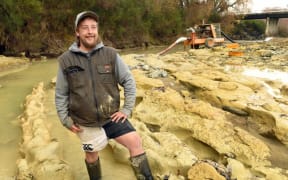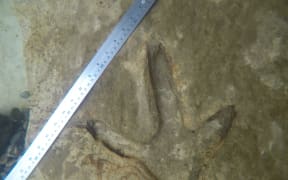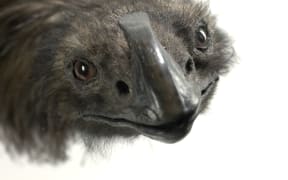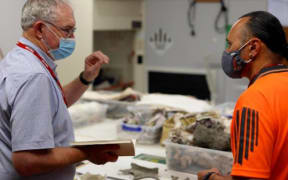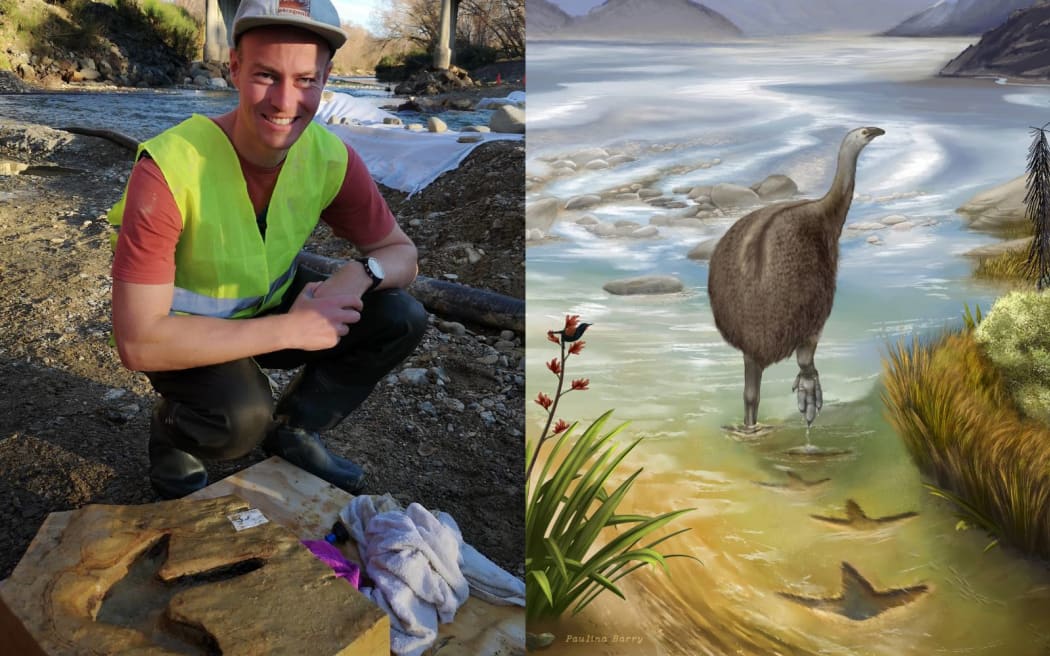
Kane Fleury with an artist's impression of the ancient moa. Photo: Tūhura Otago Museum / Paulina Barry
Researchers have discovered the first moa footprints found in the South Island date back at least 3.6 million years, making them the second-earliest fossil record of moa.
Ranfurly man Michael Johnston spotted seven fossilised moa footprints in the bed of the Kyeburn River in Otago while walking his boss' dogs in 2019.
A collaboration involving Tūhura Otago Museum, the University of Otago and local rūnaka extracted them, attracting questions and interest from across the country and abroad.
The major find was shared with the public before it had been studied, with the museum setting up a FAQ page.
Museum natural science curator Kane Fleury remembered responding to Johnston's Facebook message query four years ago, not knowing how quickly it would gain interest.
He and a team of researchers have been working to answer the public's questions, and on Wednesday, those findings were published in the Journal of the Royal Society of New Zealand in a paper titled 'The moa footprints from the Pliocene - Early Pleistocene of Kyeburn, Otago, New Zealand'.

Ewan Fordyce and Marcus Richards extracting the footprints. Photo: Tūhura Otago Museum / Ian Griffin
As lead author, Fleury said it marked a satisfying milestone of an incredible experience that has garnered intense interest from the public.
"A lot of luck goes into the fossilisation of footprints - conditions had to be absolutely perfect for these tracks to be preserved, and they had to be just right again to expose the fossils without destroying them. The public really got on board with how spectacular this find was and had heaps of questions, so it's a great feeling to be able to follow up with some answers."
Part of the challenge of finding intact remains and traces was a significant climate cooling event, with huge glaciers in Central Otago that ground up the rock and life, pulverising it and turning the Kyeburn Valley into a mass of braided river channels, he said.
The footprints were left by a member of the Emeidae family, likely a relative of the heavy-footed moa known for its unusually short and thick legs.
A 3D photogrammetry model of the fossil site revealed an extremely faint print from a second moa from a different family, Dinornithidae, was preserved in the riverbed.
Using modelling, the researchers said it weighed an estimated 158kg. Its dimensions suggested it may have been part of the Dinornis genus, which included the largest known species of moa.
"That's really significant because that also shows that moa had achieved their ginormous size 3.6 million years ago, which was suspected but now we know for certain."
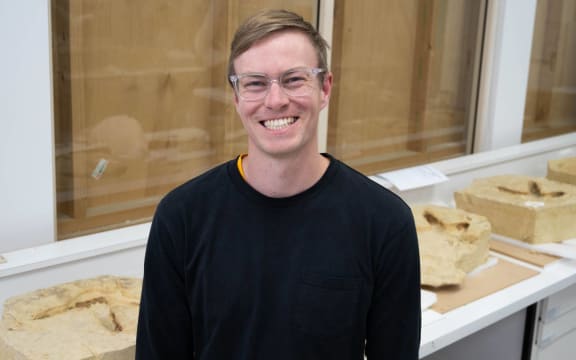
Kane Fleury. Photo: Tūhura Otago Museum / Jen Copedo
The footprints left behind by the Emeidae moa enabled them to model its height at 1095mm at the hip and weight at about 85kg. It was walking at an estimated 2.6kmh.
"It probably would have looked something a little bit like a drum on legs with a long neck so it would have been pretty stumpy."
But it was the use of a cutting edge technique to calculate when sediments in the river's banks were buried researchers discovered their approximate age of at least 3.6 million years.
Many moa traces or remains were less than 10,000 years old, so these footprints offered a glimpse into a part of their evolution that scientists remained mostly in the dark about, he said.
"We've cracked that door open a bit more."
Fleury said modelling of the Dinornithidae print suggested that moa achieved their legendary gigantic size by the Pliocene Epoch - about 5.3 to 2.6 million years ago.
He believed the community interest helped to drive the research process, calling it a "stressful privilege" to be at the helm of the research.
"The project really captured people's imaginations, and it was fantastic to have the community see this side of what we do as an institution. Research is a big part of our mission."
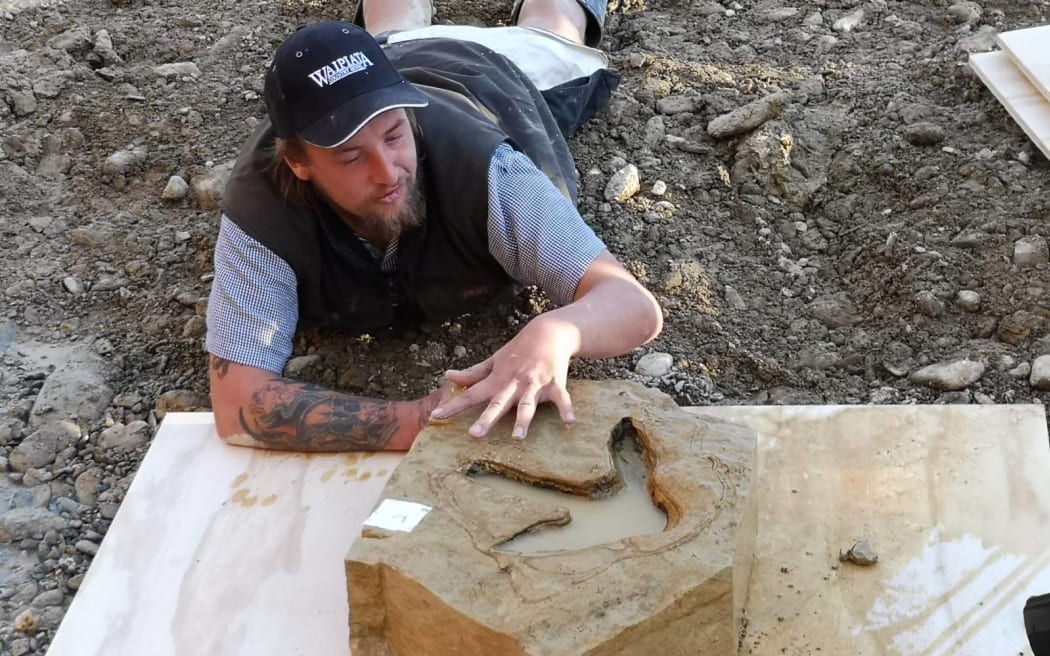
Michael Johnston and a moa footprint. Photo: Tūhura Otago Museum / supplied
Tūhura director Ian Griffin said the museum acted as a valuable conduit between the community and researchers.
"Despite our institution receiving no government funding for this important mahi, as soon as we heard about what we realised was an internationally important discovery, we linked up with experts from New Zealand and elsewhere and assembled a team that carried out one of the coolest and most important fossil recoveries in recent times.
"I'm stoked to see what's come of that."
The researchers included members of Tūhura Otago Museum, the Department of Geology - University of Otago, Victoria University of Wellington, the Australian Nuclear Science and Technology Organisation and Aukaha.
